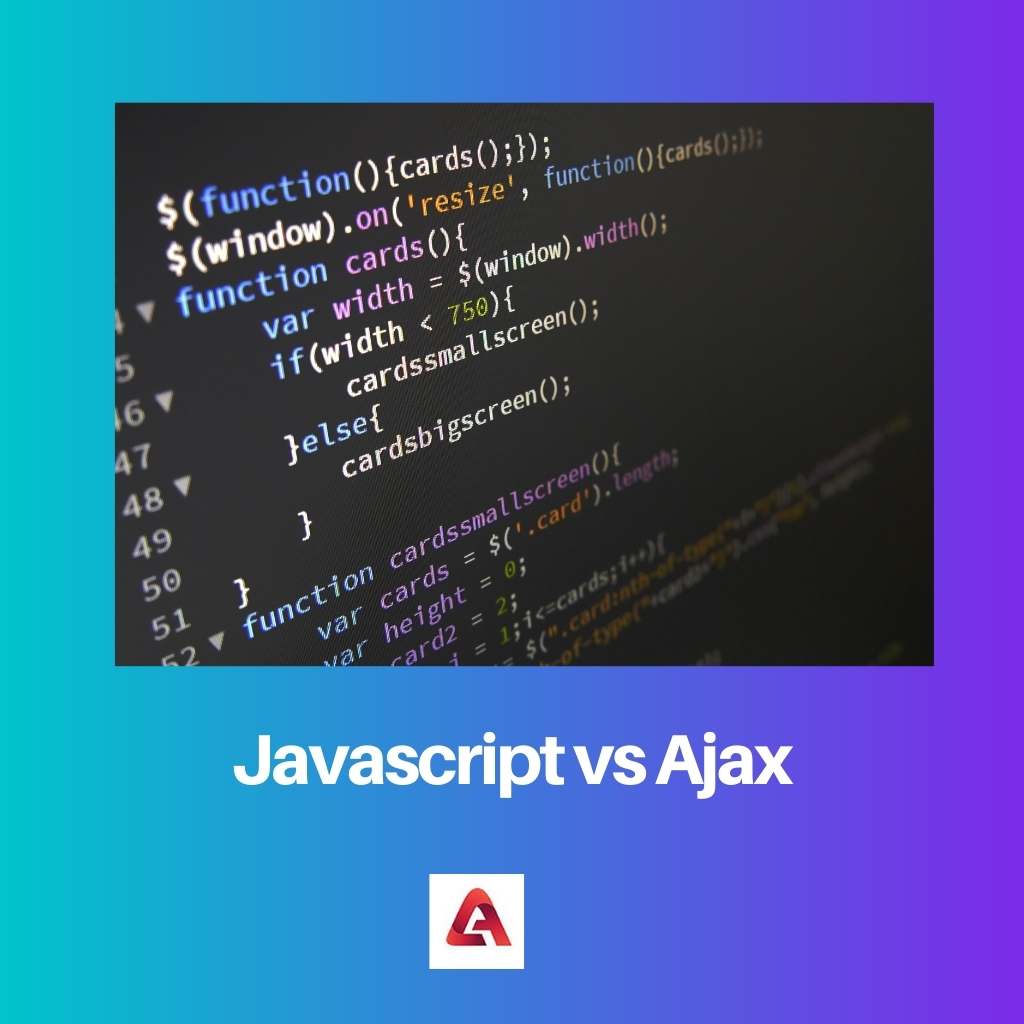The Internet lets us connect to different people, and today there is nothing left uncovered in this world. There are lots of methodologies, scripting languages, tools, and programming languages which one uses to lets us view all the information Internet, whatever we ask for.
Javascript and Ajax are some of these technologies there are used in web development and let us view and request on websites. Often these are confused about how they work, but there are differences to know.
Key Takeaways
- JavaScript is a programming language used for creating interactive web applications, while AJAX (Asynchronous JavaScript and XML) is a technique that leverages JavaScript and other technologies for asynchronous data transfer.
- JavaScript enables developers to add dynamic content to web pages, whereas AJAX allows updating parts of a web page without reloading the entire page.
- AJAX depends on JavaScript for its functionality, but JavaScript can be used independently for various web development tasks.
Javascript vs Ajax
JavaScript is a high-level programming language used to create interactive and dynamic web pages, and a client-side language that runs in the user’s web browser. Ajax is a technique for creating dynamic web applications by using JavaScript to send and receive data from a web server asynchronously.

Javascript is a dynamic and interpreted computer language that is embedded with HTML for interacting with the user and making the webpage dynamic. It is a prototype-based and weakly-typed language that is used to do the client-side operation and supports many functional styles, such as object-oriented and imperative.
AJAX is a group of many technologies, such as XHTML, CSS, DOM, and Javascript, that are used in web development. They increase the websites’ pace, efficiency, and speed, making them more user-friendly. They work on the server side and can also be used for standalone applications.
Comparison Table
| Parameters of Comparison | Javascript | Ajax |
|---|---|---|
| Definition | A scripting, open-source programming language in web development used for client-side tasks. | It is not a programming language but a technology that is a part of javascript and used for standalone applications also. |
| Functions | It performs client-side operations and makes a request to the server. | It does all the work of the server-side including sending and receiving information from the server. |
| Language supported | It supports client-side scripting language. | It supports server-side scripting language. |
| Web page loading | It doesn’t support page loading once it is done for the first time. | It supports page loading multiple times once the page is loaded for the first time. |
| Virus | It can let viruses such as Trojan be installed on the computer. | It doesn’t allow viruses to be installed on the computer. |
What is Javascript?
Influenced heavily by the C language, Javascript is a multi-paradigm language that was originally implemented to be used as part of web browsers. They provide support to object-oriented, functional programming, and imperative styles. Formalized in ECMAScript language standard, Javascript is used to interact with client-side operations with users. They are a lot easy in comparison to other programming languages to connect as the errors are easy to find. Also, there is no need for a compiler as Web browsers are able to compile JS with HTML. They do not support page loading once the full page is loaded and viewed on the website. These weakly-typed scripting languages are embedded in webpage with HTML and have many advantages such as:
- Open-source language
- It is based on a prototype
- It is dynamic and has first-class functions
- It provides validation on the client’s end
- It supports object-oriented programming
- Less heavy scripting language
- Lots of supporting web browsers.
- Provides asynchronous communication.

What is Ajax?
AJAX stands for Asynchronous JavaScript and XML. Instead of a single technology like Javascript, AJAX is a group that uses many technologies such as HTML (or XHTML) and DOM for interaction purposes, styling used CSS, XML and XML and XSLT, and XMLHttpRequest for the exchange of data and Javascript to bring more features. They are used to create the websites more interactive and add features such as page reloading. Google also uses AJAX and is one of its biggest supporters. They come with a plethora of advantages, such as:
- They help to increase the efficiency of web pages.
- It makes the website more user-friendly and interactive.
- They have no effect on server technology
- They support template rendering on the client’s side.
- It minimizes the data arrival time and server traffic.
- They let asynchronous interaction that does not lets users wait.
- It also enables form validation.
Main Differences Between Javascript and Ajax
- Javascript is an open-source, dynamic,model-based scripting language that handles the tasks of the client side, whereas Ajax is a scripting language that is a part of javascript and used to work for the server side.
- Javascript waits for the answer after requesting the information from the server, whereas Ajax doesn’t wait for the response from the server and starts operation on another page.
- Javascript doesn’t support multiple page loading once the page loading is done, whereas Ajax has an approach toward page loading, and pages can be loaded more than once.
- Javascript can be used by the different programs that can install Trojan on the computer, whereas Ajax can be used to install the Trojan on the computer.
- Javascript posts the request, and thus script needs to get updated every time a new request is posted, whereas Ajax helps reduce the server load as the script is required to be requested only once.
- Javascript is a programming language used in web development, whereas Ajax is a set of web development methods used to create websites and standalone applications.




